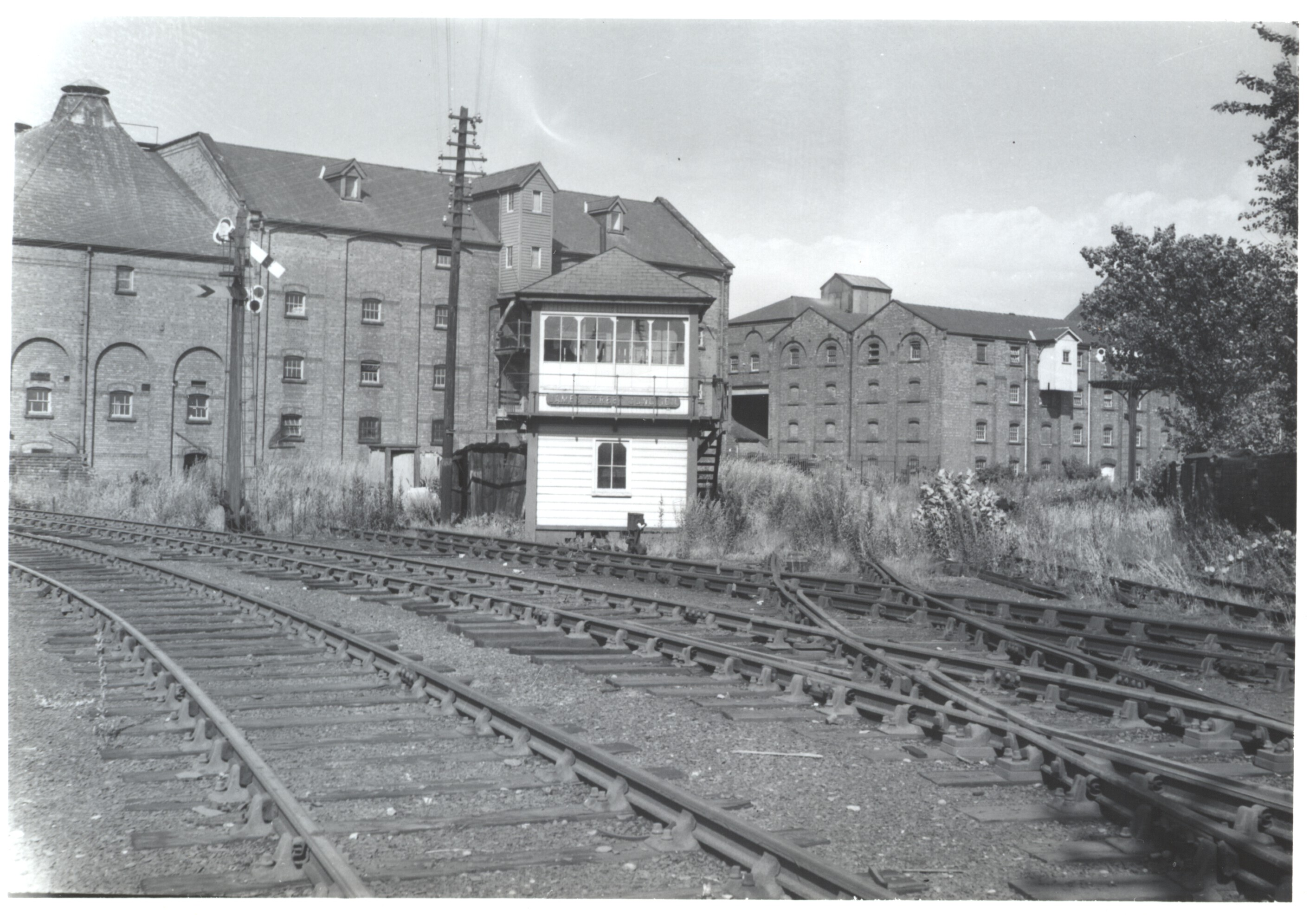
James Street Juncton photographed by the late Brian Whitehouse on 24th July 1966 (open in new window for full size). Midland Railway Study Centre.
DERBY AREA SIGNALLING
Signalbox Archaeology
As the vast majority of mechanical signal boxes were swept away by Derby Power Signal Box as early as summer 1969, there is little in the way of “traditional” signalling to see today. One of the goals I set myself for this research was to precisely locate the site of the boxes in the area and detail what the site is currently used for.

James Street Juncton photographed by the late Brian Whitehouse on 24th July 1966 (open in new window for full size). Midland Railway Study Centre.
Inevitably at least one signal box site now lies beneath a supermarket car park (James Street Junction in Burton) and others, being close to running lines, are simply not accessible. During the summer of 1999 I made a point of visiting those sites I could get to and was pleasantly surprised at what does still exist. For example, I took a walk along the disused track bed between Crich Jn and the Hammersmith end of the Midland Railway Trust site at Butterley. This section of line closed in 1968. Whilst the site of Pentrich Colliery Sidings signal box was open-casted out of existence, the trackbed west of there is remarkably intact - if overgrown. In that jungle I managed to find the four stumps of Buckland Hollow signal box (abolished 01SEP1963) where the box had simply been cut down.
One thing that amuses me about this search is the number of signalbox privvies which have long out lived the box they were built to serve. London Road Junction, for example was there for all to see when arriving at the south end of Derby station until the 2018 resignalling swept it away. Less conspicuous are those at Shobnall Junction (where a skip hire firm has built a garage on the signal box site but retains the brick privvy!), at Whatstandwell Sidings the corrugated hut nestles in the undergrowth and Kings Newton - where a few cockscomb ridge tiles were still to be found in the rubble until the disused branch was converted into a cycle track in about 2006.
At High Peak Junction there is quite a bit to see hidden in the trees alongside the now singled line to Matlock. As well as the foundations and assorted rubble of the signalbox the hulk of the steel tubed Up Home bracket signal lies where it fell. It is almost as though the S&T lopped i off intending to return the next day - and never did.
Dove Junction was probably one of the most isolated boxes in the area, wholly inaccessible by road vehicles. Its entire history is shrouded in mystery. What few photographs there are of the box serve only to offer tantalising glimpses of its architectural enigma. Current thinking is that it cannot be the original structure of the 1870's, and that there has been some pretty radical rebuilding of it over the years. One theory is that it was somehow connected with the Defence of Britain exercise during the darkest days of the Second World War, and was therefore fortified. It is no wonder, therefore that its closure would never result in its total eradication. A photograph of the box from one of the last trains to use the line - a 'farewell' rail tour - shows the majority of the wooden operating level structure to be absent, though with no sign of burning and the lever frame still in situ.
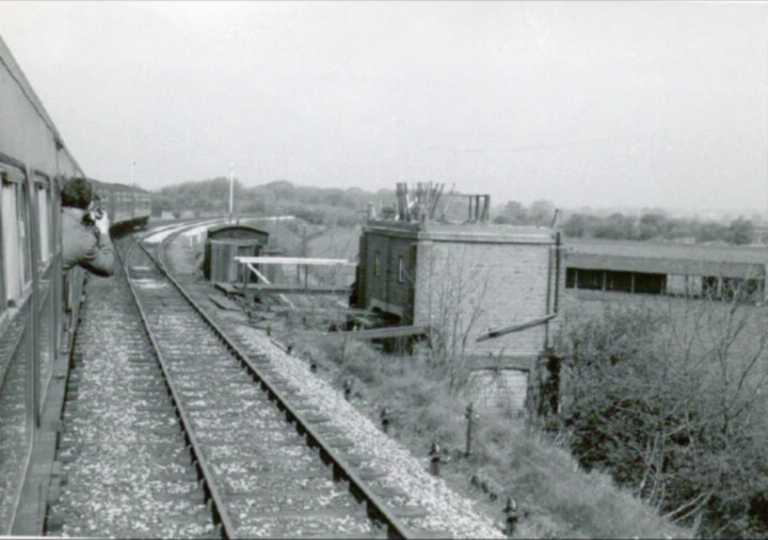
Reproduced from the Farewell to the GNR Lines DVD
A visit to the site in 1999 - no mean task given the rate at which nature has reclaimed this part of the railway - revealed much of the brick work to be in situ, though heavily overgrown. The heavy timbers that supported the frame remain, as do the redundant rails which supported the veranda and porch.
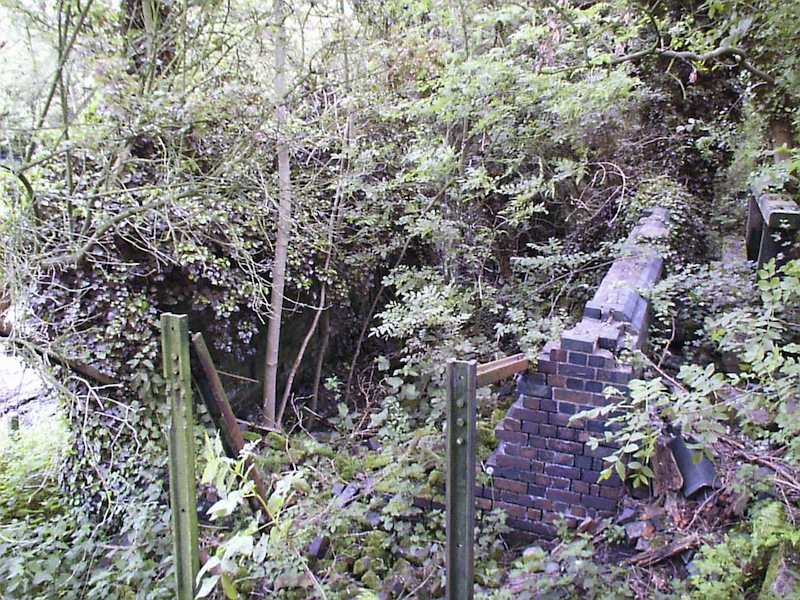
The remains of Dove Junction photographed in 1999
The site of Etwall signal box was, until relatively recent times, quite special. The abandonment of this line was unusual in that it was taken over for many years by the Research Department. As a consequence, other than recovering the signal arms, not much was done in the way of recovering assets. Time and nature did its bit and when the line was finally lifted in 1996 the vandals finished the job. When I visited Etwall signalbox at that time I knew that had remained in situ long after its closure, but as it had long been hidden from the road by trees and undergrowth I didn't know what to expect. I had heard something about a fire so as I approached I expected the worst. I was scouring the undergrowth looking for foundations when all of a sudden this hulk of a building loomed large in the undergrowth!
What I found was the gutted shell of a GNR box which, despite its condition, still managed to look imposing. Clearly the fire had been started at the non steps end of the operating floor (I guess vandals aren't usually suicidal). The result was that while almost all the roof and windows had burnt away, there were still remnants of bargeboard and landing to see. The locking room was unburnt, although filled with the resultant debris, it was there that the most striking feature was located - the locking frame was still in situ! I understand that the levers themselves were removed some years ago as the box was used as an office for a while but the painted lever numbers were still visible.At the risk of getting misty eyed, I have to say that it was quite a moving experience exploring the ruin. At that time it was in no-one's way I hoped that it would be left to silently return to nature and stand as a monument to the signalmen of a bygone age.
However the section of the former GNR line between Mickleover and Etwall has now become a cycle track. While many of the signal posts survive (complete with arm & light detectors in the case of Mickleover's Up Distant!), someone, somewhere, evidently decided Etwall box was a danger to someone, and had it reduced to a nondescript pile of rubble. That's progress.
Conversely, a little earlier, the more northerly section of the ex-GNR, between Derby Racecourse and the Morley Road overbridge was also converted into a cycle track. In the course of this work, the site of Breadsall station was cleared of 30 years worth of vegetation to reveal the foundations of the signal box. Not only that, but the work involved restoring the first few courses of brickwork to preserve the outline of the box. This work reveals the floor of the locking room with the base of the frame still attached. Something of a contrast.
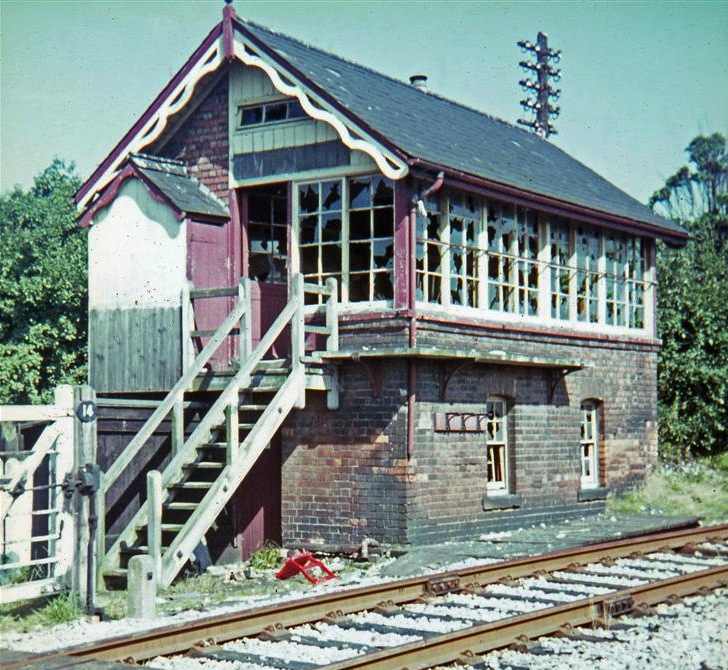
Breadsall signalbox photographed on 03SEP1968 by Howard Sprenger
Fauld Sidings was a box which was long out of use before it was formally abolished in 1971 and demolished. Strange to report, there remains a public footpath which ends abruptly where the box used to be. It seems that this footpath once continued on to Scropton, but when the sidings were created by the RAF there was no longer room to squeeze the path through because of the river. For a “Signalbox Archeologist”, however, this path is perfectly sighted. It affords a view of the quite substantial remains of Fauld box without any trespassing. As well as the surviving brick base of the box, it seems that its assets were removed rather quickly by BR as one of the disc signals which controlled setting-back moves off the Up line remain partially buried in the embankment!
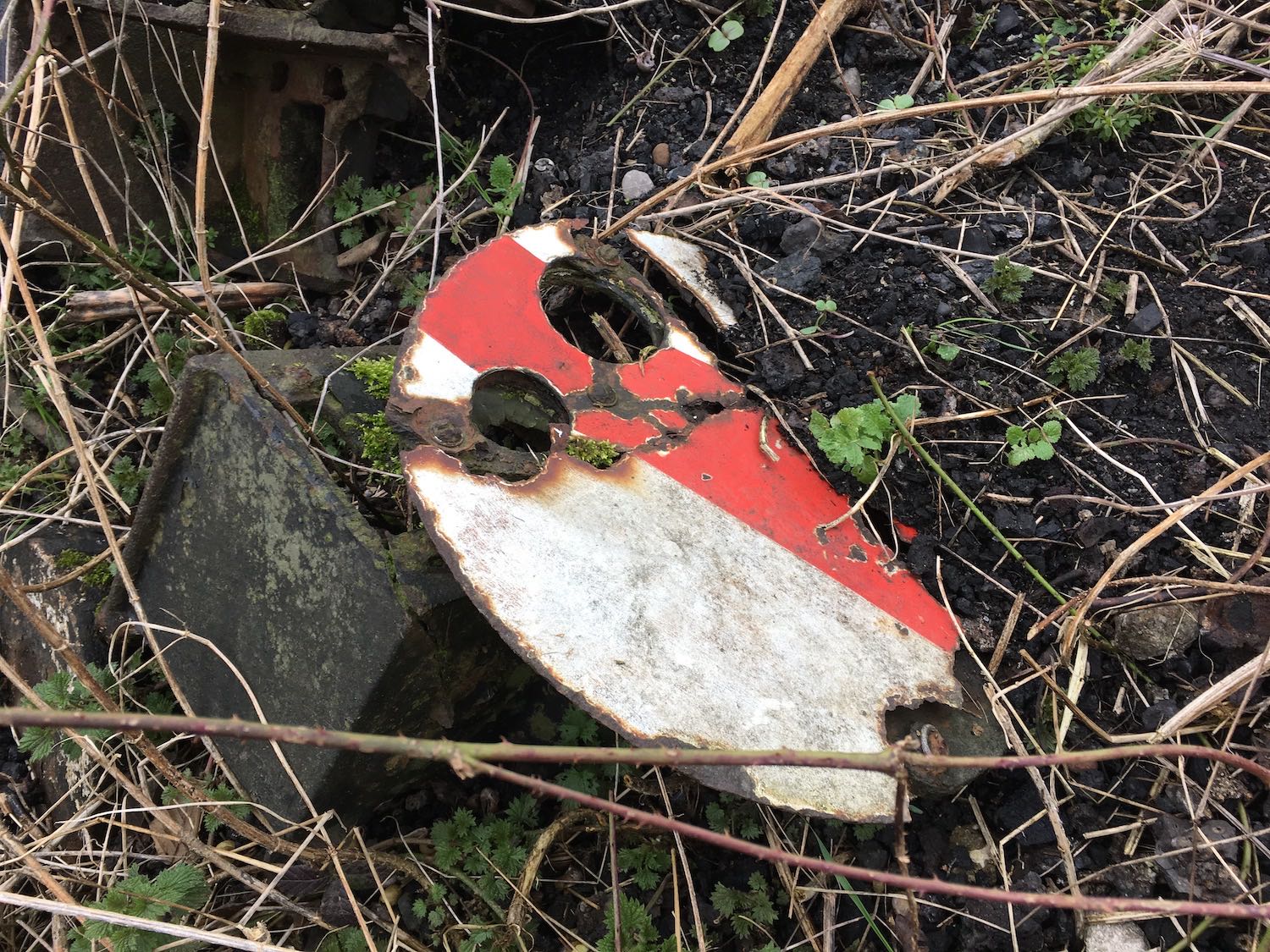
Fauld Sidings ground signal partially buried in the embankment. If anyone fancies digging, there is probably the second lower disc of this two-disc signal still buried.
In most other cases, the signal boxes listed on these pages are eradicated completely from the landscape. Nature is quick to reclaim anything we humans discard, and the sites of long-gone wooden huts leave little in the way of evidence.
Dave Harris, Willington, Derby, UK.
Email: dave@derby-signalling.org.uk
Page last updated: Sunday, 8 March 2020